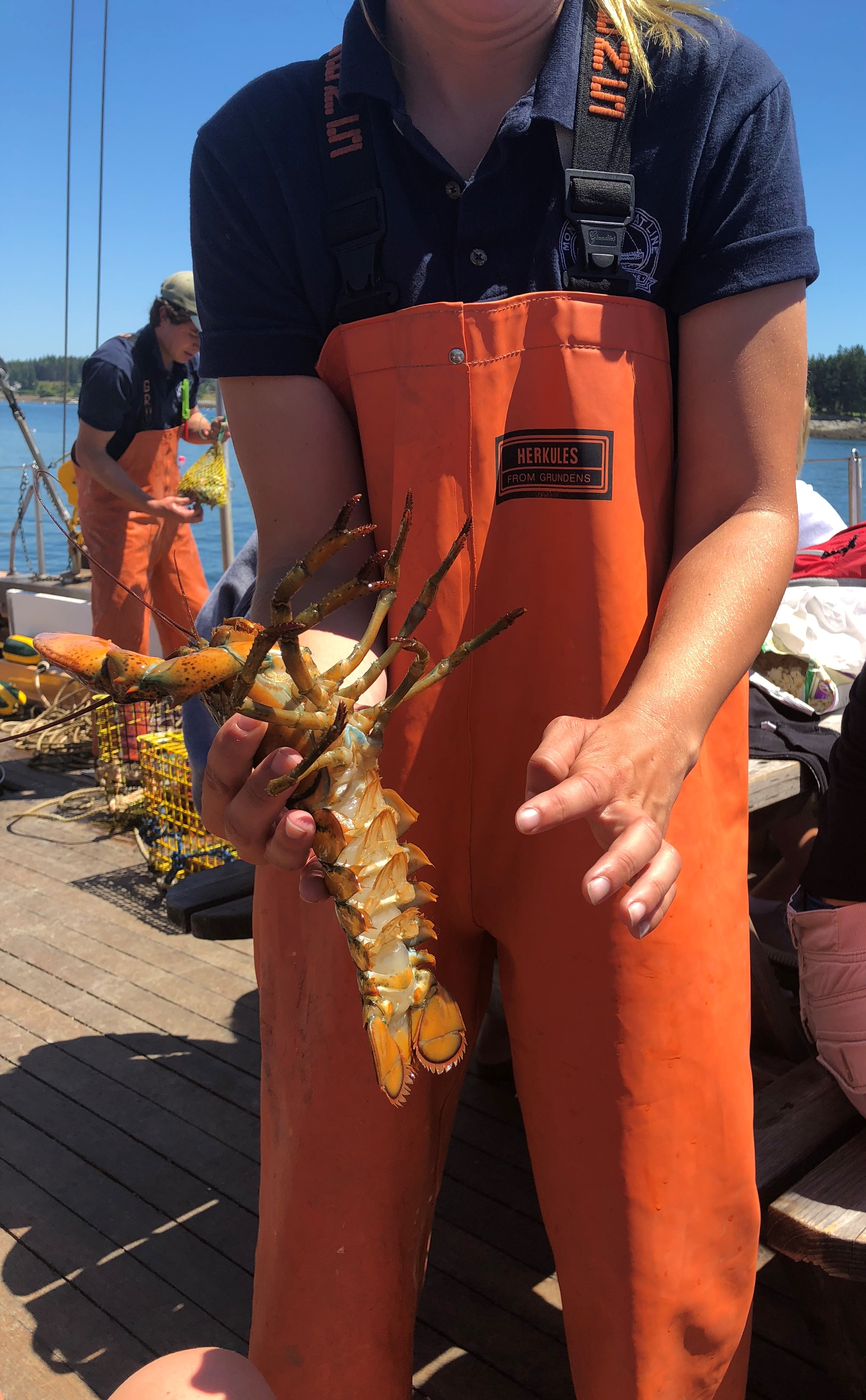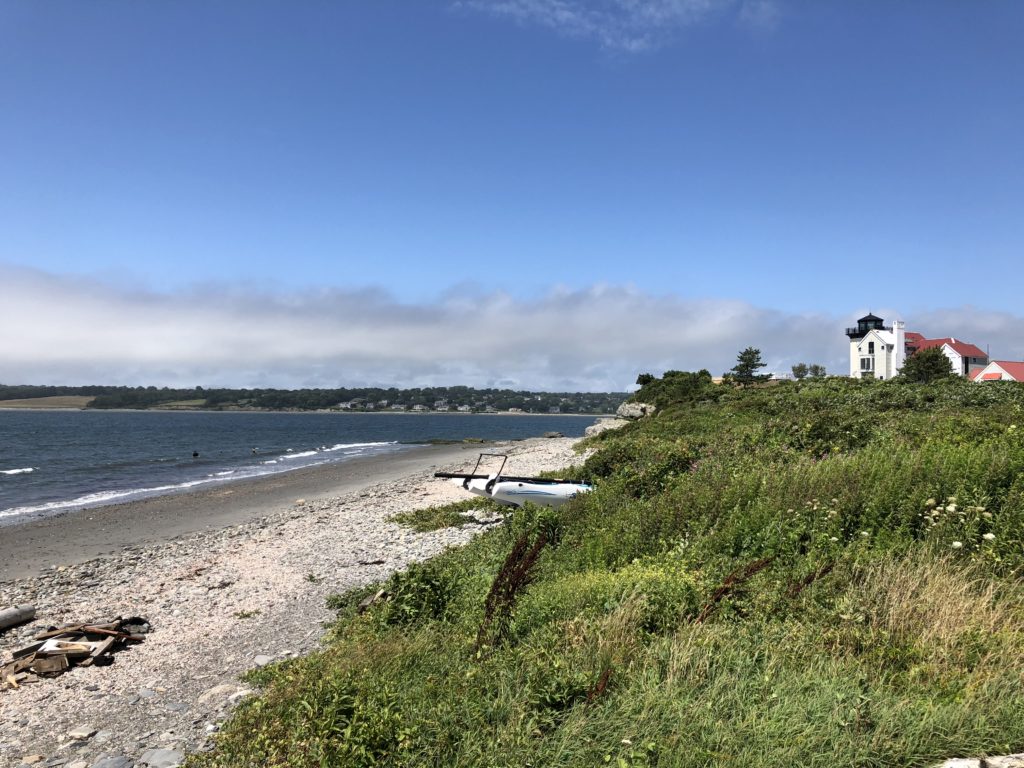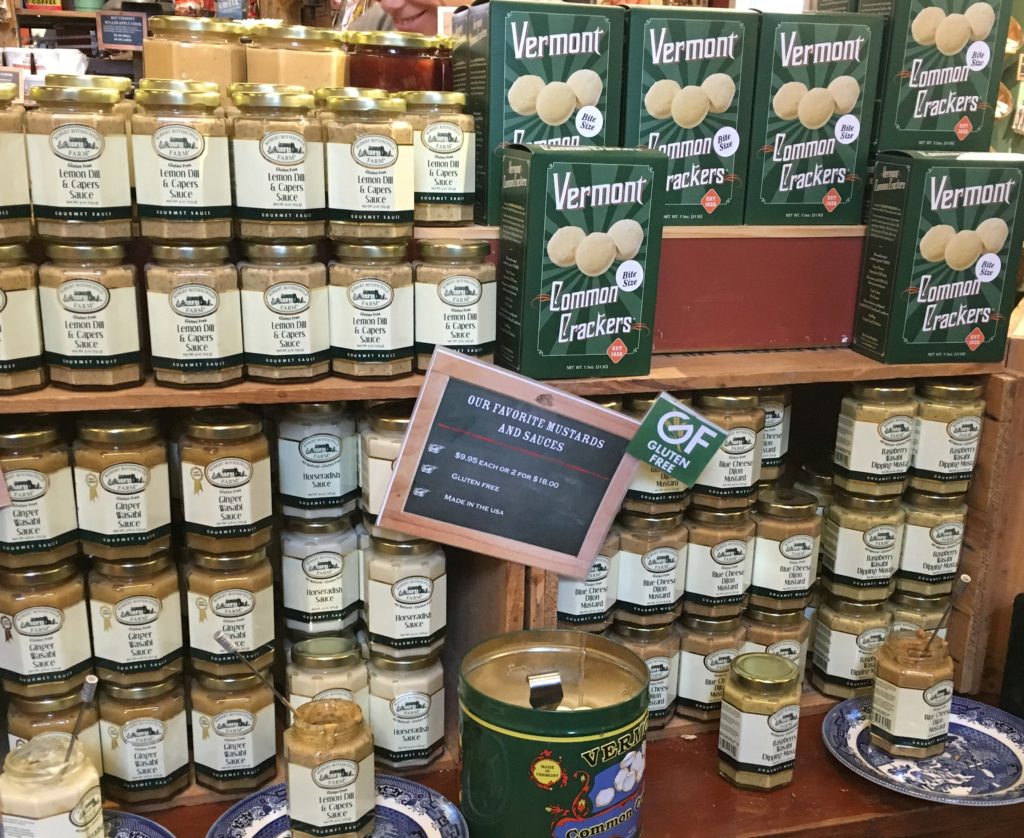Breaking away from the city, I landed in Portland, Maine and drove two-plus hours northeast to the South Thomaston region off West Penobscot Bay. Along the hundreds of miles of coves, summer people and locals co-exist, occasionally uncomfortably. (In “One Man’s Meat,” writer E.B. White described his lobsterman neighbor Dameron as a “crusty symbol of self-sufficiency…a man who is actively, almost belligerently, free.”) From my limited experience, I would say that crisply sums up the spirit of the typical Mainer here.
Intrigued by the rare opportunity to see Puffin breeding islands, we bought tickets for the Monhegan Boat Line tour from Port Clyde on the tip of the St. George Peninsula. The Puffin is not your everyday bird – not anymore – and frankly I had to be convinced it is more than a child’s imaginary toy. Sure enough, a Puffin colony is being restored on Eastern Egg Rock, one of dozens of coastal islands, thanks to the Audubon Society and other local environmentalists.
A trip to New England is rich in birding experiences, particularly along coastal areas from Maine to Rhode Island. Birds also are a critical indicator of weather and climate changes because the Eastern seaboard is a major flyover area, from south to north. In tidal Massachusetts and Rhode Island, perhaps the most-remarked upon phenomenon by visitors and residents alike is the pre-dawn “noise” of songbirds, who are anticipating the day, alerting each other to the weather conditions and beating other early-risers to food sources, or in the case of insects and small earthbound critters, “sourcing” them, if you get my drift.
Puffins were hunted for feathers and food at Eastern Egg Rock off mid-coast Maine until the last birds were killed in 1885, according to the Audubon Society’s Project Puffin. Largely gone from mid-coast Maine, where they had nested on six islands by 1900, they were translocated from Newfoundland by human ingenuity during the mid-1970s to mid-1980. Weighing about one pound, Puffins reach the age of five before they lay eggs – and then only one egg a year, nesting amid the layers of granite boulders on remote, offshore islands, especially those free from mammal predators.
Global warming is very evident here, and the Gulf of Maine is noted for being one of the fastest-warming marine habitats on Earth. Maine’s puffins, already at the southern limit of their range, serve as sensitive indicators of the effects of sea surface temperature. On the first moon in August, they travel to Cape Cod, where they winter over and then return.
We first saw the black cormorants sunning on the granite, while loons, guillemots, herring gulls and other birds circled and fished. In this busy spectacle of nature, the puffins were fairly hard to see – by comparison they are very small, not cocky like the cormorants or flirty like the gulls. Remarkably low-key, Puffins balance out the nervous feeding frenzy of the other critters in an almost meditative state, observing, being in the moment. They grouped on rocks or floated in the water – detectable as black triangles, with a spotting of white when in flight, and their signature bright orange beaks visible mostly by binoculars.
Our tour boat, the Laura B, was an important part of the experience. A restored World War II “T-boat,” originally on patrol in the Pacific Theater, she was owned by a single family as part of their lobstering and eco-tourism business. Our tour guide Siena represented the newest generation to continue in the family-run business; her grandfather purchased the former tugboat in 1976 and would have been abundantly proud.
The two and a half hour trip was as much a lesson about the feisty lobster culture as a cruise among the mysterious puffins. Maine’s nearly $2 billion lobster industry, the mainstay of the state’s economy, is under assault by a variety of forces – commercial, environmental and social (recently, opioid abuse). Much of the lobster industry is sustained by family tradition, in which successive generations inherit and pass on their deep knowledge of local lobster habitat. In fact it’s so attractive from many perspectives that a high school diploma is now required for a lobstering license, due to an unsustainable high school drop out rate.
Competition, declining lobster population, the length of the lobster lifecycle (7 years to an adult big enough to be a “keeper”) and economic protection have resulted in a heavily regulated industry. Now there is a 10-year wait for licenses, and a maximum of 800 traps per license. Sophisticated radar mapping has demystified what lies on the ocean’s floor and where the lobsters are. Colorful buoys indicating lobster traps are so prevalent across the bay that it makes sense that many boat propellers are respectfully surrounded by porous wire cages. The line-cutting that does occur, however, usually is a form of local justice. The first warning that a new lobster pot has encroached on someone else’s terrain is a knot that mysteriously appears in the line; the third warning is a cut line (and yes, this happens on occasion). This tightly knit culture you learn from the local stories, and there is helpful science and research on The Lobster Conservancy’s website.
My hosts, who live in the South Thomaston area 5 months a year, were understandably “out-lobstered” by mid-July. A surfeit of New England boiled dinners was the upshot of a succession of summer guests, and it was time to be tempted by other local specialties coming into season, like the sweetest reddest strawberries and the plump corn. Not yet out-lobstered, I slipped away a couple of times to McLoons Lobster Shack around the cove on Spruce Head Island. The lobster rolls were simple and absolutely dreamy, as was the lightly creamy corn chowder. Unlike the mayo-heavy lobster rolls I’ve found in the Boston area, these sandwiches were simply large chunks of sweet tender lobster meat on an unadorned bun and light butter optional on the side. Straight from the water and straight from the bay where it was caught. You cannot experience a fresher “sea to table” experience!
Where: the region around South Thomaston, Maine, a slightly more than 2-hour drive up the coast from Portland, Maine toward Rockland. (A fun detour, just north of Portland, is the LL Bean flagship store and complex in scenic Freeport, Maine.) Follow I-295 north from Portland, then US 1 to Thomaston, then south or southeast into the peninsula.



